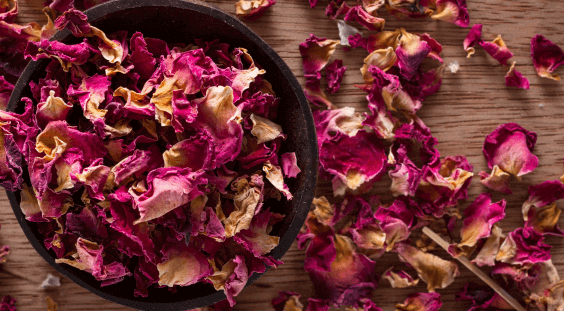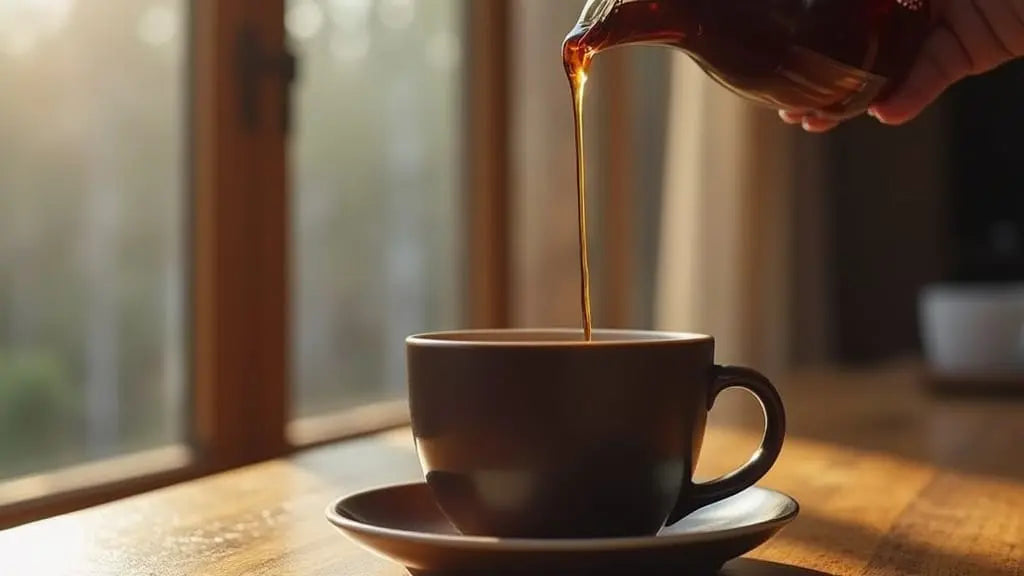The Benefits of Rose Petals: Soothing Comfort, Skin Support, and Everyday Uses
Last updated: August 28, 2025

Rose petals have a long history in culinary, skincare, and aromatic traditions. Today they’re still enjoyed for gentle, floral teas and simple self-care rituals. While modern studies are growing, evidence varies by preparation (tea, extract, or aroma), so it’s best to think of rose as a mild, enjoyable option that may support relaxation and skin comfort.
In this guide you’ll find practical ways to use dried petals at home, a quick tea recipe, safety notes, and answers to common questions. We also include a product card for convenient sourcing and structured data for better search visibility.
Quick take: use rose petals where a soft, calming floral note makes sense—an evening cup of tea, a scented bath, or a light skin rinse you’ve patch-tested first.
What Rose Petals Are Used For
Rose petals are a gentle, versatile botanical. People use them for calming teas, light aromatics, and simple skin-support rituals. Evidence varies by preparation (tea, extract, or aroma), so consider rose a mild, enjoyable option that may complement your routine.
Calm, mood, and sleep quality
- Many enjoy a warm cup in the evening to wind down.
- Mild floral aroma can make relaxation practices feel more intentional.
- Best used consistently in small amounts rather than as a “strong” sedative.
Skin comfort and simple rinses
- Brew a weak tea, cool completely, and use as a brief rinse after patch testing.
- Focus on comfort and hydration rather than dramatic results.
- Stop use if irritation occurs and avoid broken skin.
Gentle digestive and everyday comfort
- A light floral tea after meals may be soothing for some people.
- Pairing with chamomile or lemon balm can round out the flavor profile.
Aromatics and bath rituals
- Add a small handful of petals to warm bathwater for scent and ambiance.
- Simmer a few petals in water on low heat to gently scent a room.
- Keep expectations modest; aromatics are about sensory enjoyment and routine.
Looking for culinary-grade petals? See our product page for sourcing details and sizes: Bulk Rose Petals.
How to Use Rose Petals
Use culinary-grade dried petals for simple teas, gentle skin rinses you’ve patch-tested, and aromatic baths. Start with small amounts and adjust based on comfort and taste.
Simple Rose Petal Tea
A gentle, floral cup you can enjoy warm or iced.
Ingredients (1 serving)
- 1–2 teaspoons dried rose petals
- 8 oz (240 ml) hot water (about 200 °F)
- Optional: 1 teaspoon honey or a squeeze of lemon
Instructions
- Place petals in a tea infuser or teapot.
- Pour hot water over the petals; steep 5–7 minutes.
- Strain. Sweeten or add lemon if desired.
- For iced tea, cool to room temperature, then pour over ice.
Flavor tips: Pair with chamomile or lemon balm for a rounder cup; add a thin slice of fresh ginger for warmth.
Quick Topical Ideas (Patch-Test First)
- Skin rinse: Brew a weak tea, cool fully, apply briefly with a clean cotton pad; discontinue if irritation occurs.
- Bath add-in: Add a small handful of petals to warm bathwater for light aroma and ambiance.
- Room simmer: Gently simmer a few petals in water on low to scent a space.
Storage & Quality
- Keep sealed and away from heat, light, moisture, and strong odors.
- Use within 12–18 months for best aroma and color.
- Choose petals that look vibrant and smell fresh.
- Learn More: The Ultimate Guide to Storing Bulk Herbs
Considerations & Safety
Rose petals are generally considered a gentle botanical when used in culinary amounts. Still, a few basic precautions help you use them responsibly.
Who should be cautious?
- Pregnancy or nursing: Evidence for many herbs in these life stages is limited. Speak with your healthcare provider before regular use.
- Allergies: If you have known plant allergies, especially to members of the Rosaceae family, avoid use or proceed with care.
- Medications or conditions: If you take prescription medicines or manage a medical condition, check with your clinician before adding new herbal routines.
- Children: Use smaller amounts and supervise. When unsure, ask a pediatric clinician first.
Topical use and aromatics
- Patch test first: Apply a small amount of cooled, diluted tea to the inner forearm and wait 24 hours. Discontinue at any sign of irritation.
- Keep it simple: Use freshly brewed, cooled tea for quick rinses. Avoid broken skin and the eye area.
- Essential oil vs. tea: Essential oils are highly concentrated and not the same as a tea. Use only as directed and avoid ingestion unless guided by a qualified professional.
How much and how often
- No single “standard dose” exists: Start small, such as 1–2 teaspoons of dried petals per 8 oz water, then adjust by taste and comfort.
- Short steep first: Try 5 minutes, then increase steep time if you prefer a stronger cup.
- Listen to your body: If you notice discomfort, reduce the amount or stop use.
When to get care
- Persistent or worsening symptoms despite home care.
- Any signs of allergic reaction, such as hives, wheezing, or swelling.
- New or concerning symptoms after using an herbal preparation.
Educational purposes only. Not medical advice.
Rose Petals: Frequently Asked Questions
Are rose petals safe to drink as tea?
Culinary-grade dried petals are commonly used for herbal tea. If you have plant allergies, are pregnant or nursing, or take medicines, check with your clinician before regular use.
How much should I use per cup?
Start with 1–2 teaspoons of dried petals per 8 oz (240 ml) hot water. Steep 5–7 minutes, then adjust petals or time to taste.
Do rose petals contain caffeine?
No. Rose petal tea is naturally caffeine-free.
Can rose tea help with relaxation?
Many people enjoy rose’s soft floral aroma in evening routines. Evidence varies by preparation (tea, extract, aroma), so consider it a gentle option to pair with good sleep habits.
How do I store dried petals?
Keep sealed and away from heat, light, moisture, and strong odors. For best aroma and color, use within 12–18 months.
Can I use rose petals on my skin?
Some use a cooled, diluted tea as a brief rinse. Always patch-test first, avoid broken skin and the eye area, and discontinue if irritation occurs.
What’s the difference between culinary petals and potpourri?
Culinary petals are processed for food and beverage use. Potpourri may include non-food additives or dyes and is not intended for consumption.
How do I make iced rose tea?
Brew a stronger hot cup (2 tsp petals, 8 oz water, 7 minutes), cool to room temperature, then pour over ice. Sweeten or add lemon to taste.
Educational purposes only. Not medical advice.







1 comment
Keep up the amazing work! I’m looking forward to reading more posts from you